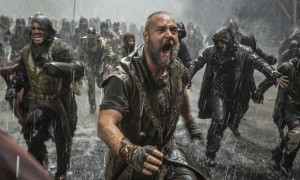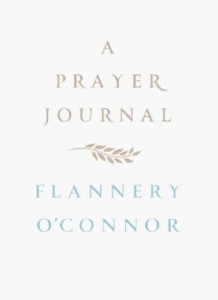MORE ON THE NEW RENAISSANCE
Here is an article my friend Jen Waters wrote for The Washington Times. I am also cureently enrolled in one of the new Brehm Center programs.
Art, Christianity reunited, page A2, 7/1/04
By Jen Waters
THE WASHINGTON TIMES
Craig Detweiler is hoping for a modern-day renaissance of the arts. He
dreams of the day when members of the Christian church will again be the
primary patrons of respected artistic endeavors, as in the era of
Michelangelo.
As a filmmaker and student at the Brehm Center for Worship, Theology and
the Arts at Fuller Theological Seminary in Pasadena, Calif., Mr. Detweiler,
40, says he believes the renewal is happening, slowly but surely. He also is
the author of “A Matrix of Meaning, Finding God in Pop Culture.”
“We want to reclaim that grand lost heritage,” he says. “We want to not
only be a place where artists gather, but encourage the next generation of
ministers to integrate the arts into the worship experience.”
The Brehm Center is a division of Fuller Theological Seminary that aims
to better equip artists with a theological education and better inform
clergy about the arts. The Brehm Center collaborates with Fuller’s graduate
schools of theology, intercultural studies, and psychology to develop
curricula.
William K. and Delores S. Brehm of McLean, Va., first pledged $2 million
in 1999 for the center and increased the amount over time to $15 million
total. Mr. Brehm is on the board of directors of SRA International Inc. in
Fairfax, Va. The money endowed by the Brehms provided funds for new classes
to be offered at the seminary.
The center was authorized officially by the Fuller Board of Trustees in
the spring of 2001, which supported the creation of six new degrees, says
the Rev. Clayton Schmit, academic director of the Brehm Center.
“Those artists who are Christians that come to Fuller Seminary tend to
want to inform their art by studying faith,” he says. “They tend to be
people who do not want to be known as Christian artists, but Christians who
are thoughtful artists whose faith informs their work.”
Students can now earn a doctorate in theology with a concentration in
theology and culture; a master’s degree in theology with a concentration in
theology and culture; a master of arts in theology with a theology-and-arts
format; a master of arts in worship, theology and the arts; a master’s of
divinity with a concentration in worship, theology and the arts; and a
master of arts with a ministry focus in ethnomusicology in mission.
Starting in the fall of 2005, students will be able to earn a doctorate
in theology with a concentration in worship and culture or a master’s in
theology with a concentration in worship and culture.
“Bill Brehm realized there was a poverty of imagination and thought we
needed to affirm the faith-filled artist and equip the next generation of
ministers to affirm the artists in their midst,” Mr. Detweiler says. “We
need about 10 or 20 more Bill Brehms all over the country and around the
globe to affirm the faith-fueled art. We have to rediscover that art is not
frivolous. It’s essential to the human journey, to humanity’s deepest
longings, needs and questions.”
As a student, Mr. Detweiler is earning a doctorate in theology with a
concentration in theology and culture.
“I’m learning how to create, express and interpret more creative
metaphors for the glory and splendor of God,” he says. “Unfortunately,
Protestants have done a lot of telling in their art, as in more overt
movies. I’m more interested in showing and demonstrating in my art.”
As part of the Brehm Center, “Reel Spirituality: An Institute for Moving
Images” (www.reelspirituality.org) provides educational programs about film,
says Justin Bell, assistant director of the organization. On Oct. 22, “Music
to Our Eyes: Music, Film and Theology in Dialogue” will be held at the
Director’s Guild of America in Los Angeles.
“We’re trying to give artists better tools to do their art,” says
25-year-old Mr. Bell, who is earning a master’s in divinity with a
concentration in worship, theology and the arts. “We’re rethinking inside
the church how we communicate theology. … It’s not just preaching from the
pulpit.”
However, the main goal of the faculty is not to teach the students to
create evangelistic art, says Fred Davison, executive director for the Brehm
Center.
“When God asked the Israelites to create the Tabernacle, there were
things in the Tabernacle that didn’t have any function, but to be
beautiful,” Mr. Davison says. “We know from the Bible that God appreciates
beauty. We can see that all around us. It’s a way we communicate as human
beings.”
Instead of focusing on evangelism, Mr. Davison would rather have artists
who are Christians correctly represent the worldview they attest to believe.
Further, since he says only a person can be a Christian, he doesn’t use the
word “Christian” as an adjective. He tries to discourage his students from
becoming involved in subcultures, such as “Christian music” or “Christian
dance.”
“In an effort to engage in popular culture, we get ‘love songs for
Jesus,’ ” he says. “They think the text of the songs are conveying a
biblical truth, but it’s not a biblical truth. These songs may be fun to
sing, but what does the song really say? Does it say a truth we believe
about God?”
Michelle Markwart, 26, a student at Fuller Theological Seminary says she
decided to earn a master of arts in worship, theology and the arts because
she wants to display excellence and professionalism in her work. She is a
vocalist. She also plays the piano and guitar.
“If you’ve ever seen any amount of church drama, it can be a little
sugary, not very artistic, and very trite,” she says. “That doesn’t
communicate the love of Christ to anyone, because Christ wasn’t trite. We’re
tired of seeing the word Christian placed on art because of the stereotypes
it places on Christianity. It demeans the arts. The world doesn’t want to
see it. The church has to realize it’s our fault as the church for allowing
that stereotype to happen. If we can’t take responsibility for our own
hypocrisies, it’s really foolish.”
Without a credible voice in popular culture, the American church becomes
obsolete, especially in the area of the visual arts, says Jack Hafer,
producer of “To End All Wars,” staring Kiefer Sutherland. The film, which
had limited release in theaters and is available on DVD, was based on the
book by Ernest Gordon called “Through the Valley of the Kwaii.” Mr. Hafer,
along with other professional artists, mentors students at the Brehm Center.
“The church in America has really been behind the times in the support of
the arts,” he says. “The church needs to be part of the great conversation,
which is really the great issues of life, talked about in a great way. …
I’m doing everything I can to encourage them to keep moving ahead in that
area.”











